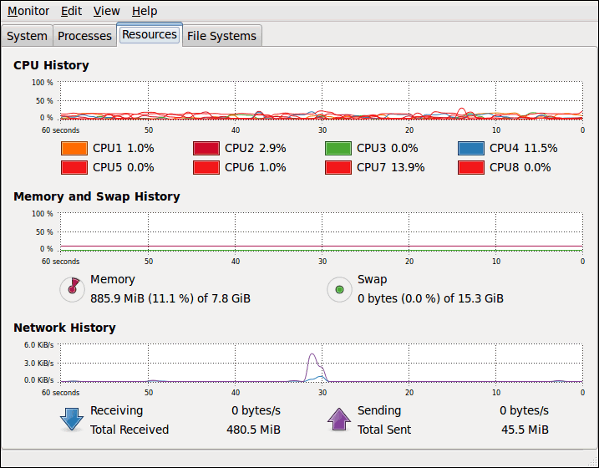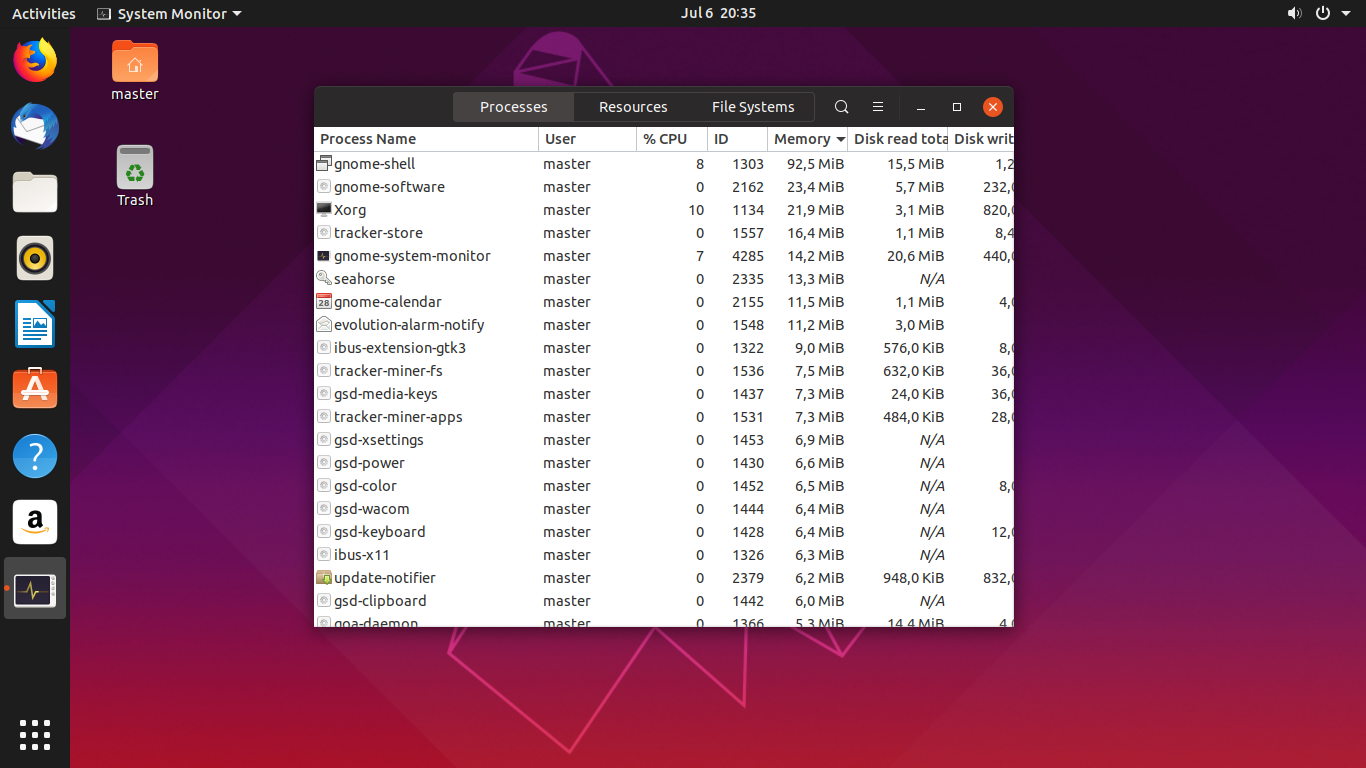
- #Mate system monitor linux how to
- #Mate system monitor linux install
- #Mate system monitor linux password
- #Mate system monitor linux license
- #Mate system monitor linux iso
Next you will get a login screen with the user you created above.Here you can find different ways of installing Spotify for Linux. On this screen, click Finish Configuration. This will get you to the final screen as far as the installation is concerned.
#Mate system monitor linux license
Go ahead and click the I accept the license agreement check box, and then click Done. When the OS comes up for the first time, there is a licensing agreement screen: Once you do step 7, the installation process should start installing packages, as in the below screenshot:Īfter the installation to the hard drive is complete, you'll be faced with the following screen:Īt this point the OS will reboot, and you should remove your boot media. Begin Installation - Once all of the settings have been set or verified, go ahead and click this option.If you want the user to have administrative rights, remember to set this option when creating the user. User Creation - Definitely create at least one user.Remember to save this somewhere safe (password manager), particularly if it isn't something you will be using often.
#Mate system monitor linux password
Root Password - Go ahead and set a root password.As long as the network is enabled, you can always change this later if you need to. Network & Host Name - Verify that you have what you want here.Installation Destination - You'll need to click into this option, even if it is just to accept what is already there.Time & Date - Make sure this matches up to your time zone.

#Mate system monitor linux install
Once you've decided that you would like to use it permanently, double-click the option to Install to Hard Drive. Don't panic, just wait! Once the live image is booted up, you should see this screen:Īt this point, you can use the MATE environment and see if you like it. Remember, this is a live image, so it's going to take a bit of time to boot to the first screen. If so, you are on your way! If you want to test the media, you can select that option first, or you can simply type S to Start Rocky Linux Mate 9.0. You should be presented with this screen if you are successful: You'll need to make sure that your machine is set to boot to whatever your media is (DVD or USB) as the first boot device. This again is different by machine, BIOS, OS, etc.
#Mate system monitor linux how to
We are assuming here that you know how to write the image to your media. This procedure is different depending the OS you are using, the media, and the tools.
#Mate system monitor linux iso
If the checksum for the file returns OK, you are now ready to write your ISO image to your media. (note this is an example! Make sure your image name and CHECKSUM files match): Now verify the image with the CHECKSUM file using the following Download both the live image and checksum files. Note this particular link assumes x86_64 as your architecture, and as of this writing, that is the only architecture this particular live image is available for.

You can find the latest MATE image in the download section for Rocky Linux 9 live images. As stated earlier, the image will be bootable, just like any other installation media for Linux. Prior to installation, the first step is to download the live image and write that to a DVD or a USB thumb drive. 9: MATE from Live Image ¶ 9: Get, Verify, and Write the MATE Live Image ¶ In addition to the live image instructions, we have included installation instructions for those of you who want to install MATE after the OS has already been installed.

Once loaded, you have the option to install it to your machine's disk drive and use it. A live image, for those that may not know what that is, is a bootable image that will load the OS without installation. The development team for Rocky Linux 9 have made installing MATE, and other popular desktop environments, easy by including live images. Verifying DISA STIG Compliance with OpenSCAP - Part 2 Host-based Intrustion Detection System (HIDS)īash - Conditional structures if and case Building and Installing Custom Linux KernelsĪutomatic Template Creation - Packer - Ansible - VMware vSphereĩ: Get, Verify, and Write the MATE Live Image


 0 kommentar(er)
0 kommentar(er)
